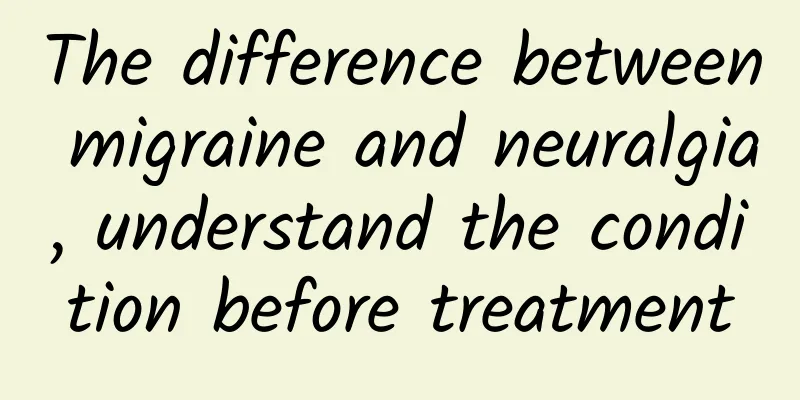The difference between migraine and neuralgia, understand the condition before treatment

|
Both migraine and neuralgia headaches can cause us a lot of pain, especially migraine, which will recur and become more and more severe. Neuralgia headaches are mostly caused by tension and anger, which cause persistent pain and a feeling of oppression. 1. Migraine is a type of recurring throbbing headache, and is one of the most common types of headaches. Before the onset of the disease, there are often precursors such as flashes, blurred vision, and limb numbness. A throbbing pain on one side of the head will appear for about a few minutes to an hour and gradually intensify until nausea and vomiting occur. The feeling will not improve until the headache is relieved in a quiet, dark environment or after sleep. Neurological and mental dysfunction may occur before or during a headache. At the same time, it is a progressive disease, with episodes usually occurring more and more frequently. 2. Neuralgia mainly refers to tension headaches, functional headaches and vascular neurosis headaches, which are mostly caused by mental tension and anger. The main symptoms are persistent dull pain, pressure and heaviness in the head. Some patients complain of a feeling of "tightness" in the head. Most patients have headaches on both sides, mostly on the temporal sides, occipital area, top of the head or the entire head. The nature of the headache is dull pain, distending pain, pressure, numbness and a band-like tight feeling. The intensity of the headache is mild to moderate and rarely causes bedriddenness or affects daily life. Some patients may have persistent headaches for years, and some patients' symptoms can even be traced back 10-20 years. The patient may have headaches all day long, with headaches lasting longer than pain-free time. Headaches are often aggravated by factors such as excitement, anger, insomnia, anxiety or depression. There are also some patients who not only have the characteristics of tension headache, but also have the clinical manifestations of vascular headache, and complain of bilateral temporal pulsating headache. This clinical manifestation of both tension headache and vascular headache is called mixed headache. Patients often have symptoms such as dizziness, irritability, anxiety, palpitations, shortness of breath, fear, tinnitus, insomnia, back pain, and neck stiffness. Some patients have obvious tenderness points on both sides of the neck or temples. |
<<: What beans can nourish the kidneys? Men can eat these to nourish the kidneys.
>>: How to treat fungal otitis media? Check and treat in time
Recommend
Breast structure
Everyone's breasts have different structures....
How to repair damaged keratin membrane
Damage to the stratum corneum is very common in l...
Symptoms of postpartum depression
Many women have some adverse conditions after giv...
What are the symptoms of nerve damage caused by injection?
Generally speaking, injections will not damage ne...
What is the best sleeping position for pregnant women in the fourth month? What is the effect on the fetus?
Generally speaking, the adjustment and arrangemen...
What to do if the trachea itches, coughs and has phlegm
The oral cavity and nasal cavity are two importan...
What to do if you are burned by alkali? Emergency treatment for alkali burns
Pyrolyte, also known as sodium hydroxide in chemi...
Why does adrenocorticotropic hormone increase?
Today, I will briefly explain to you the reasons ...
Why do my knees turn blue?
Sometimes, when we look at our knees, we will fin...
List of foods that should not be eaten when taking Chinese medicine
Everyone may get sick at some point in life, and ...
Is fasting required for liver disease examination?
It seems that everyone has gone through a physica...
What happens if white blood cells are reduced?
White blood cells are a very important and indisp...
What should I do if my child's teeth turn yellow?
If a child's newly replaced teeth turn yellow...
What causes acne on chest
Acne is mostly caused by irregular work and rest....
What can Astragalus be soaked in water with?
As we all know, Scutellaria baicalensis is a Chin...









